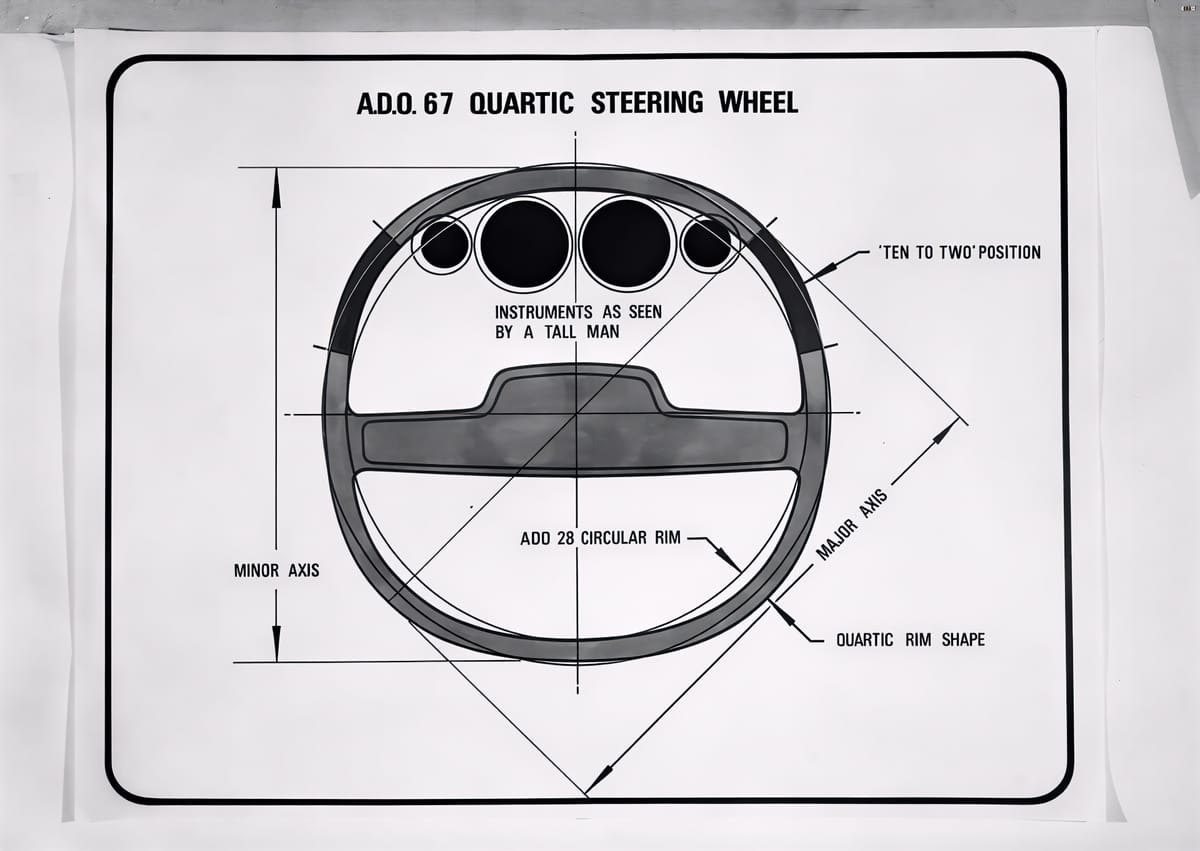Square Wheels and Tech Traction
From flop to the top. What the once-mocked square steering wheel and electric glasses can teach us about technological innovation.

Rising from the Ashes
Time can transform our view of a device and its chances of success in the market. In the world of technology, new innovations are made every day, with all kinds of issues and unpopular results. Among these disappointments, there are, naturally, some positives that help both the products and the users — but for the sad majority, it doesn’t tend to go well. These often initially innovative technological advancements which eventually fail can sometimes make a comeback years later, for a variety of different reasons. Square steering wheels and VR glasses are good examples of how originally ‘interesting’ designs that were quickly discontinued can later be redeveloped and become a product that everyone wants.
A Square Wheel and a Public Failure
The first square steering wheel inside a car was the ‘Quartic Wheel’ in the Austin Allegro, first put on the market in 1973. This automobile featured a square-like steering wheel designed to increase legroom and make the instruments easier to see; however, this weirdly shaped wheel was extremely controversial and unpopular, leading to it being discontinued under ten years later, with less than 700,000 produced in total. The odd shape felt strange to drivers who were used to the traditional circular wheel and the change disrupted what people considered to be the traditional driving experience. Despite these drawbacks, the attempt showed some forward thinking in trying to redesing a basic car component. This bad start for the square wheel, however, hasn’t stopped car brands like Peugeot and Tesla from bringing back these rectangular rudders in some of their best-selling car models. The change in people’s opinions on the shape of the wheel can be put down to a few different things, such as how normal it now looks in Formula 1 and how it is now widely recognized that a more square wheel is easier to hold than a classic circular one. What once seemed awkward and impractical is now often seen as innovative and functional, proving that sometimes ideas just need time to find their place on the market and in a more modern society.

An Early Attempt of Meta Glasses
While racing car-style steering wheels were being brought into the mainstream, some much earlier-stage technologies were setting the groundwork for modern VR and smart glasses. Google Glass, or just “Glass,” was a bold attempt to bring the future into reality that didn’t go to plan. These were glasses with a small screen for your eyes and came with a price tag of $1,500. Released in 2012 as a prototype and sold in 2013, they included a camera that raised various concerns for the general public as it could be used to record people without their knowledge. Just two years after its public release, the Glass was discontinued due to all kinds of issues; from privacy concerns to short battery life and high price. People found it awkward to wear, and it felt more like a tech experiment than a practical everyday device. Despite these problems, Google Glass helped push the idea of wearable smart technology into the public’s imagination.
A Fan of Ray-Ban
However, around a decade later, Ray- Ban Meta Glasses came along and followed in Glass’s footsteps — and this time, they were a hit. The second-generation Meta Glasses, released in 2023, were instantly popular, selling 2 million pairs. Their popularity stemmed from a variety of reasons, such as their more normal-looking design and how much more effective and efficient they were to use overall. The Meta version was sleeker, around five times cheaper, and had way more features; while The Glass had a battery life of about 3 hours when in use, the most new modern Meta glasses last 36 hours with the charging case included. These improvements made them much more appealing and useful for everyday wear, not just for tech enthusiasts. This comeback shows how advancements in technology, combined with better design and lower prices, can revive a product that was once written off.

The Common Factor
All of these product failures had successors that took the basic idea, waited for the technology around it to catch up, and brought it back in a much better way. Even though the first versions didn’t work out, they still paved the way for what came next. This is actually how most big innovations happen — they often develop from something that didn’t thrive when initially brought to market. From the iPod to the automatic hoover, both of these now-common products came from earlier designs that weren’t popular when they were released as their effectiveness was limited by the extent and level of technology developers had access to. Timing, technology, and improved design all play crucial roles in turning a failed product into a successful one.
Looking to the Future
With improved timing, design and tech, even a failed product can come back and succeed the second time around. This cycle of trial, failure and comeback is a common pattern in the tech world; what initially seems like a failure can later become a stepping stone for future success. Sometimes, it’s just a matter of waiting for the right moment and for the necessary technology to catch up. Whether it’s steering wheels or wearable glasses, the tech world shows us that second chances are often what innovation is all about.
Bibliography:
Austin Allegro sales:https://www.aronline.co.uk/history/bmc-leyland-production-figures/
Google Glass:https://www.investopedia.com/articles/investing/052115/how-why-google-glass-failed.asp
Meta Ray Ban
Specifications:https://moorinsightsstrategy.com/research-notes/ray-ban-meta-smart-glasses-review-better-cooler-and-more-useful-than-ever/
Selling statistics: https://www.uploadvr.com/ray-ban-meta-glasses-sold-2-units-production-to-be-vastly-increased/
Images
Quartic Wheel:https://www.hagerty.co.uk/articles/automotive-history/the-full-english-austin-allegro/
Google Glass: https://m.gamblefaces.com/?dch=21.17762795.2.19
Feature Image: Wikipedia



